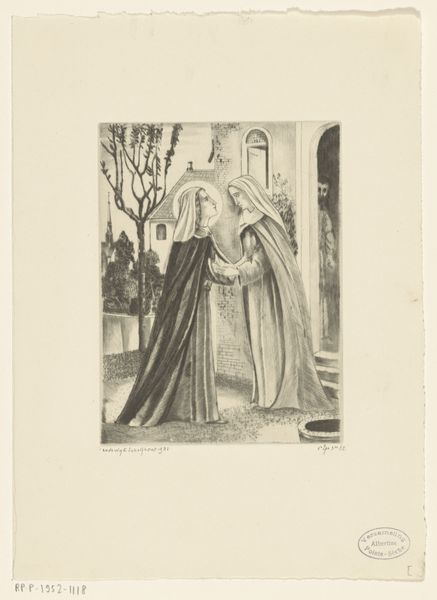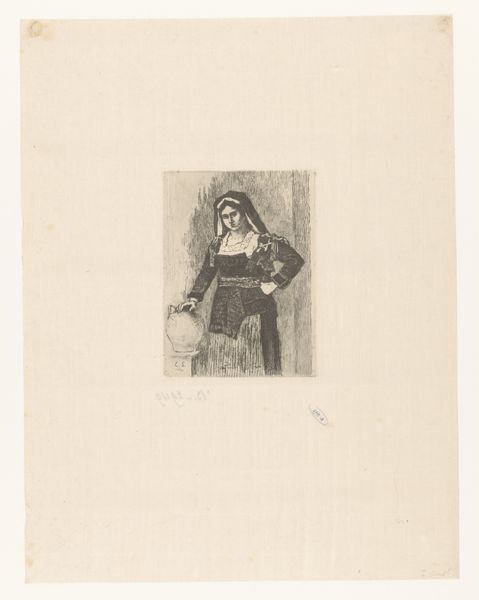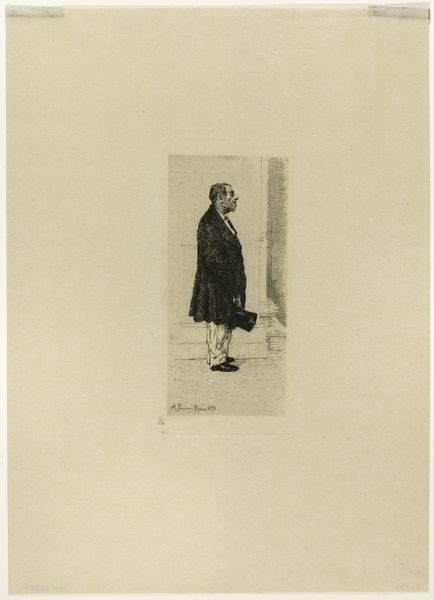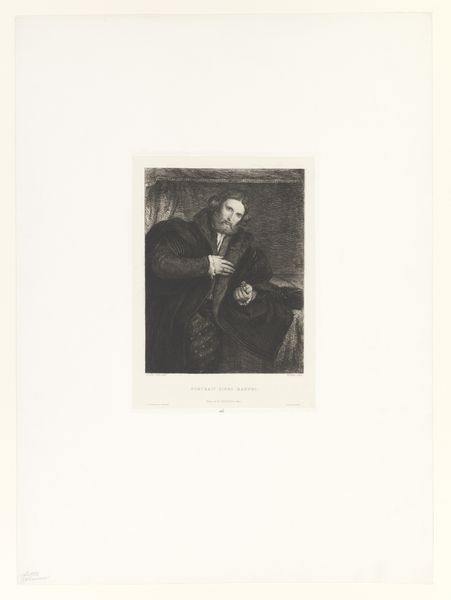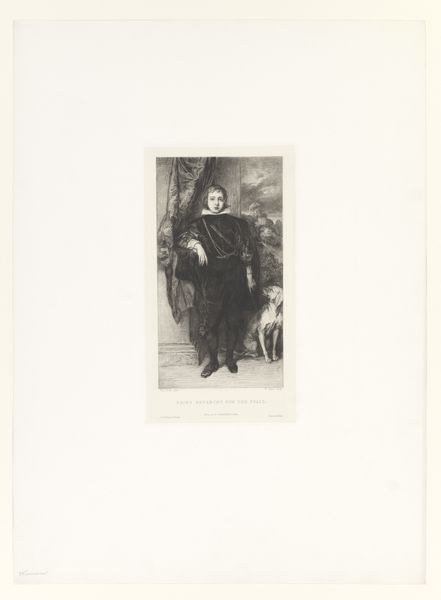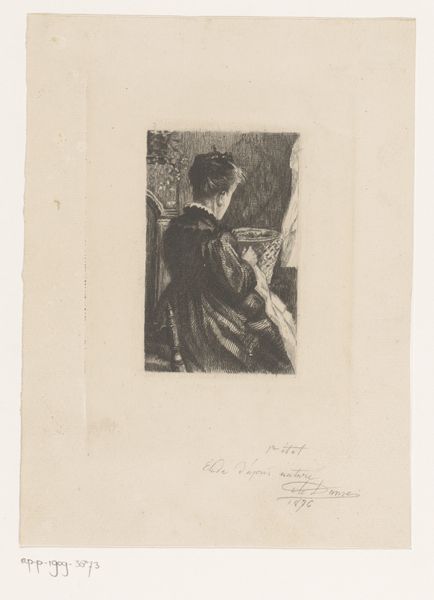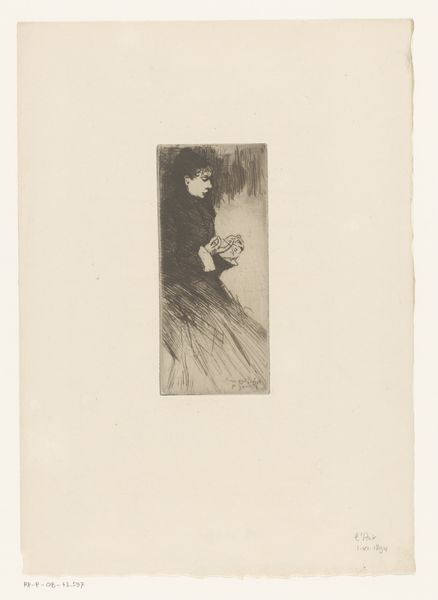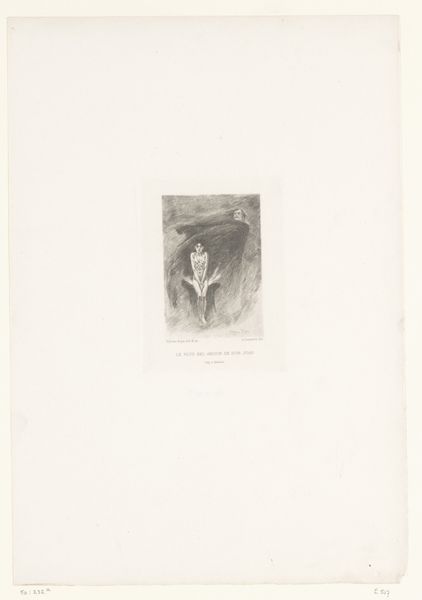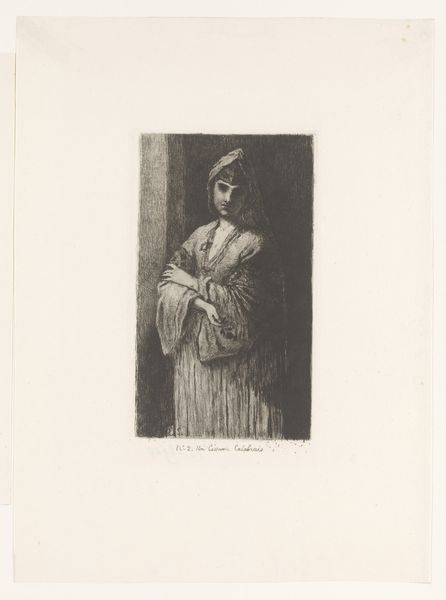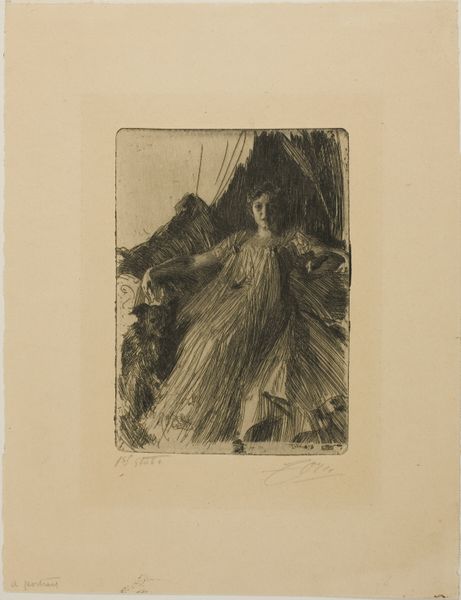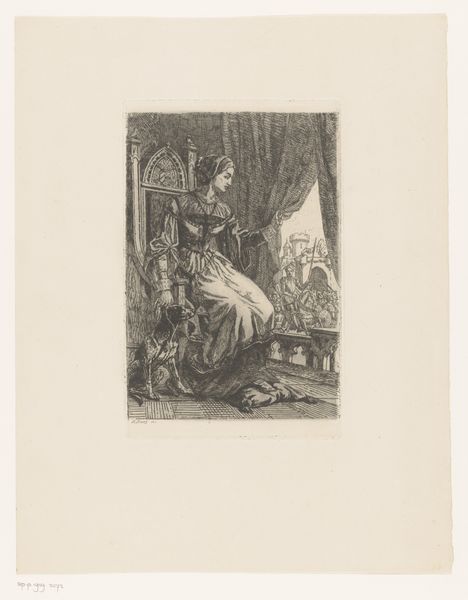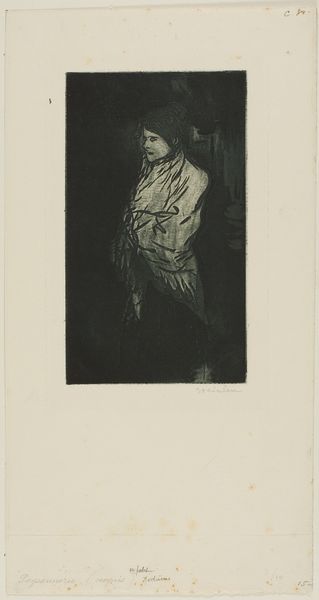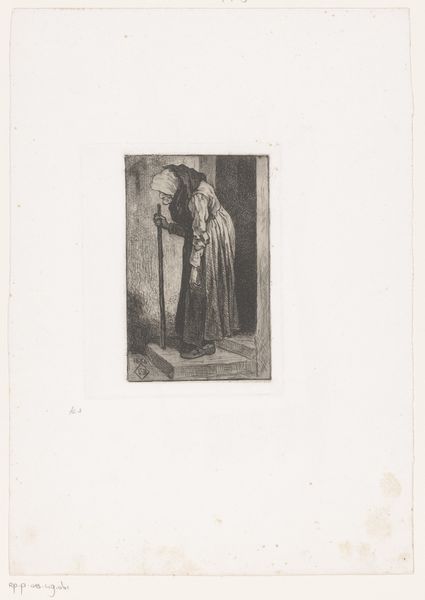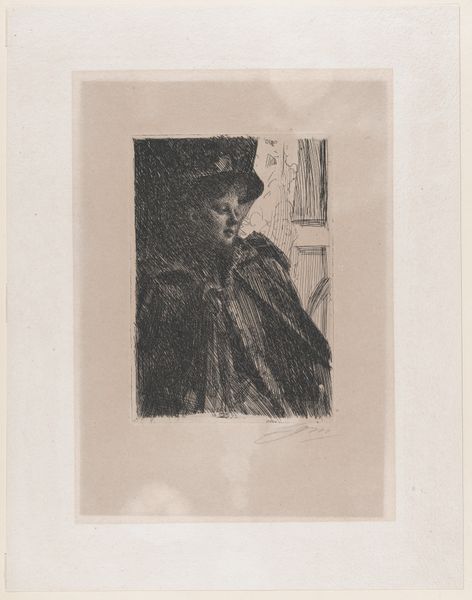
Dimensions: height 100 mm, width 70 mm
Copyright: Rijks Museum: Open Domain
Editor: Here we have Lodewijk Schelfhout's "Woman by a Tomb," created in 1922. It's an etching, a print on paper, currently residing in the Rijksmuseum. There's a really strong melancholic feel to this, a heavy darkness... what strikes you most about this work? Curator: What jumps out at me is how Schelfhout uses the visual language of symbolism and expressionism to portray grief, perhaps even a commentary on the societal constraints placed on women expressing emotions, particularly during mourning. How do you think the choice of a solitary female figure enhances this reading? Editor: I think the solitude is really key. It highlights a sense of isolation and individual suffering. Do you think there are political undercurrents at play here, considering the period in which it was created? Curator: Absolutely. This was post-World War One, a time of immense loss and social upheaval. Could the tomb represent not just personal loss, but a broader societal mourning for a lost generation? The woman's bowed posture could symbolize not just grief, but also a quiet resistance to societal expectations of resilience. Editor: That's a perspective I hadn't considered. It goes beyond personal sorrow, becoming almost a representation of collective trauma. Curator: Exactly. It raises questions about whose losses are publicly acknowledged and whose grief remains unseen. It encourages us to think about the ways women’s experiences were, and often still are, marginalized in historical narratives. Editor: It’s amazing how a seemingly simple image can hold such complex layers of meaning, reflecting personal and societal struggles. Curator: Indeed. Art often serves as a silent witness, challenging us to confront uncomfortable truths about ourselves and the world we inhabit. Editor: Thanks! I now understand the importance of recognizing historical and social contexts when viewing artworks!
Comments
No comments
Be the first to comment and join the conversation on the ultimate creative platform.
